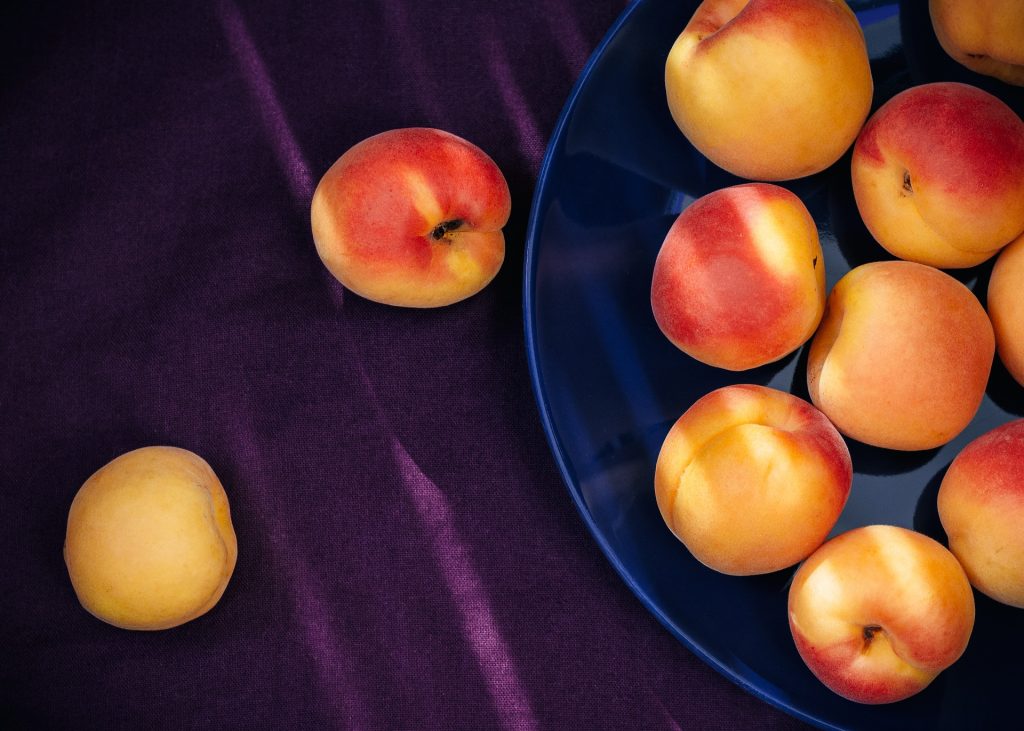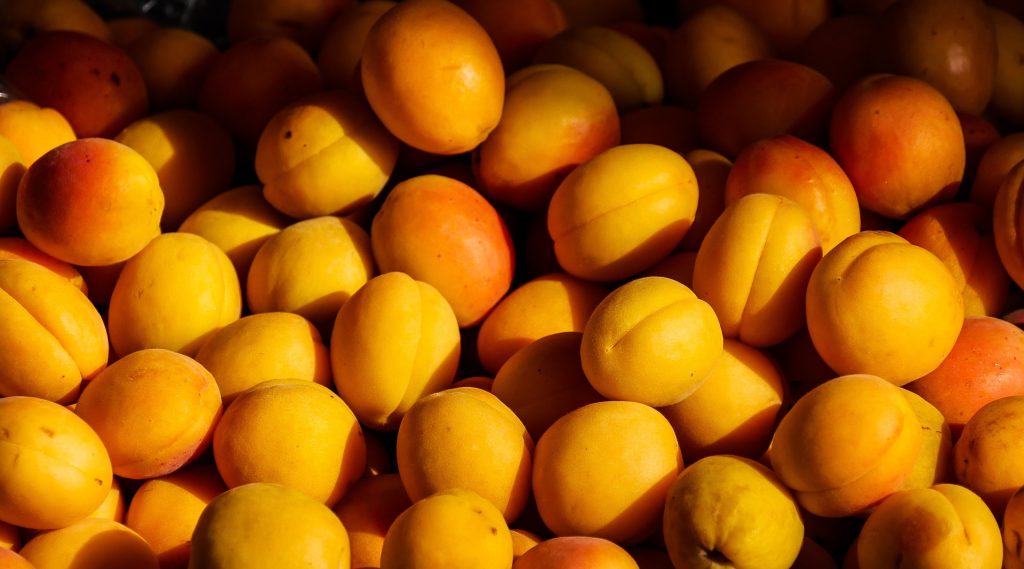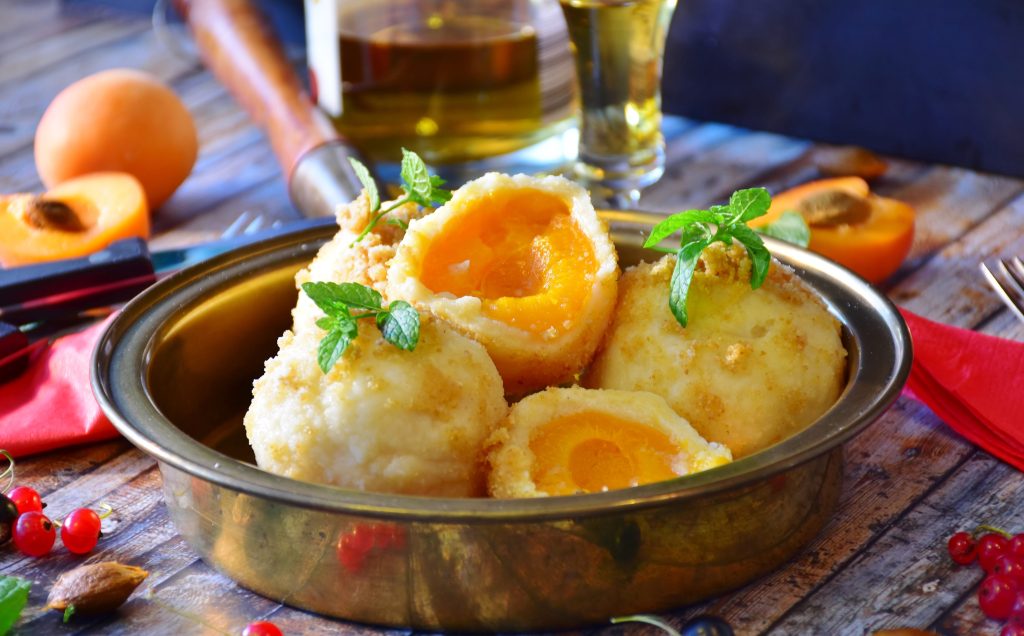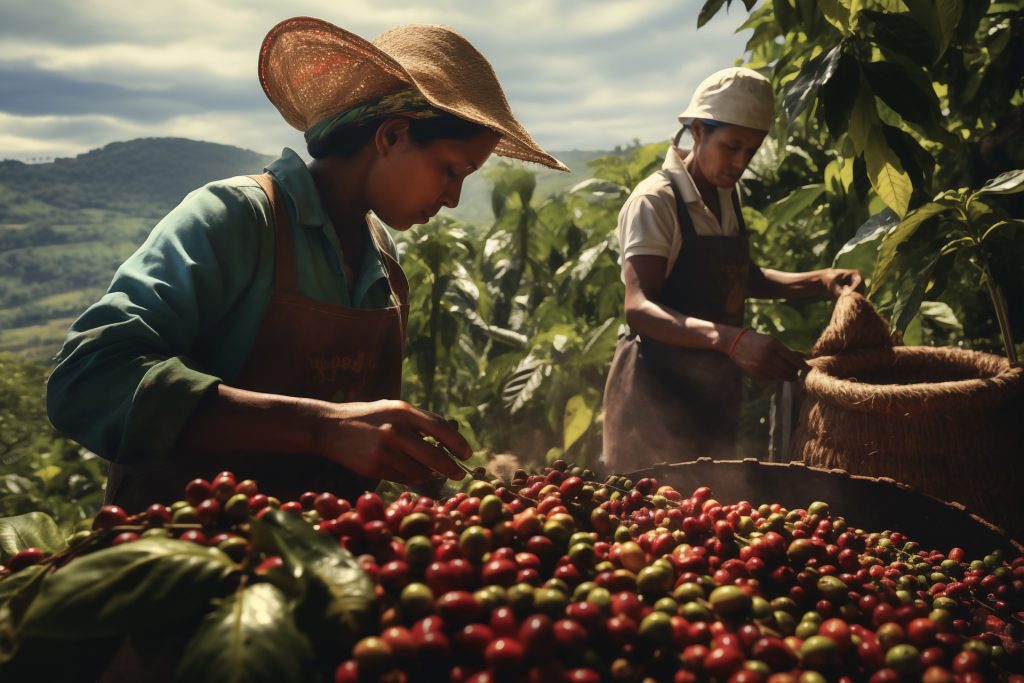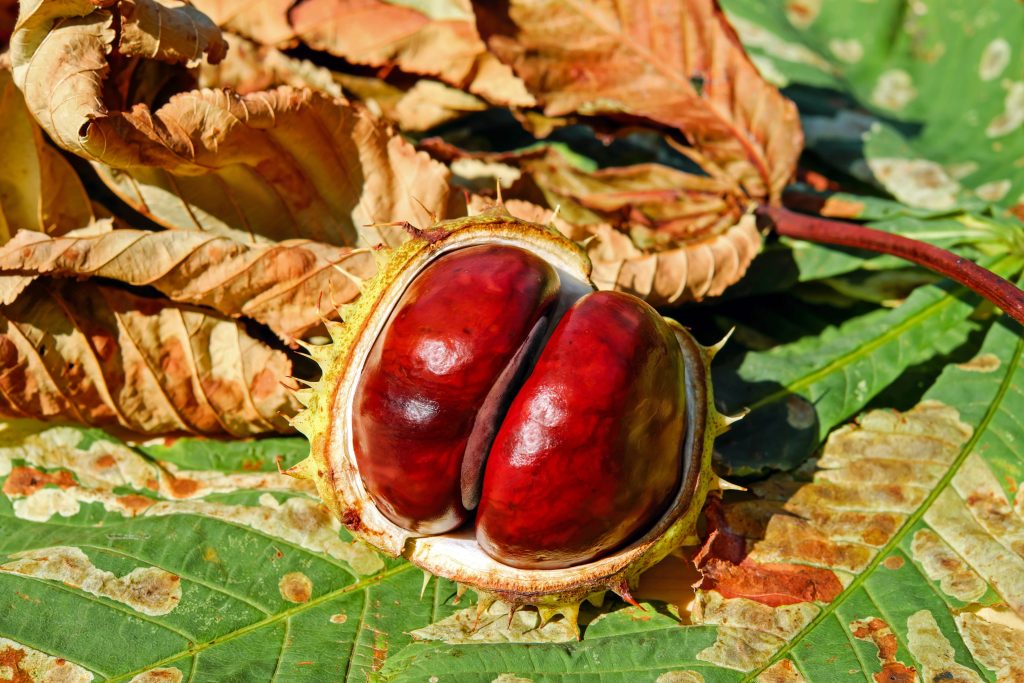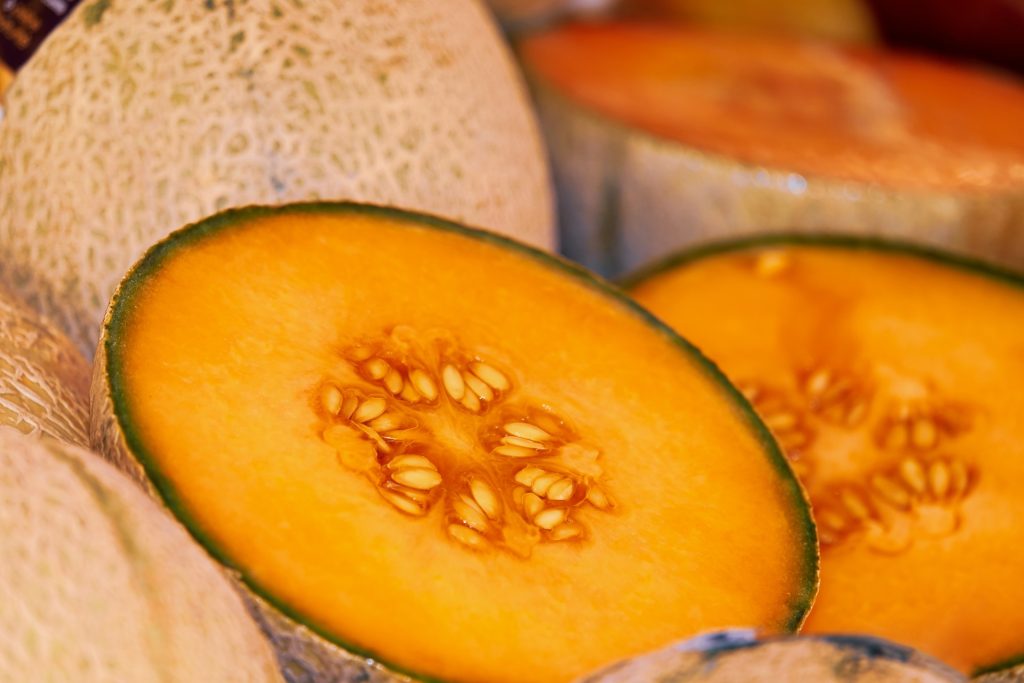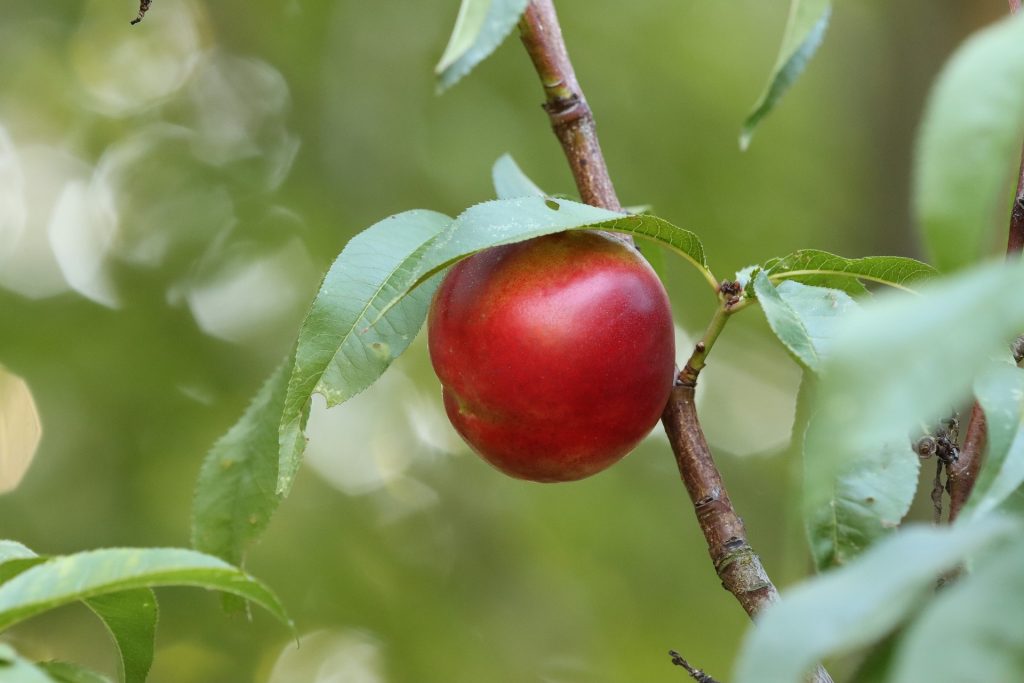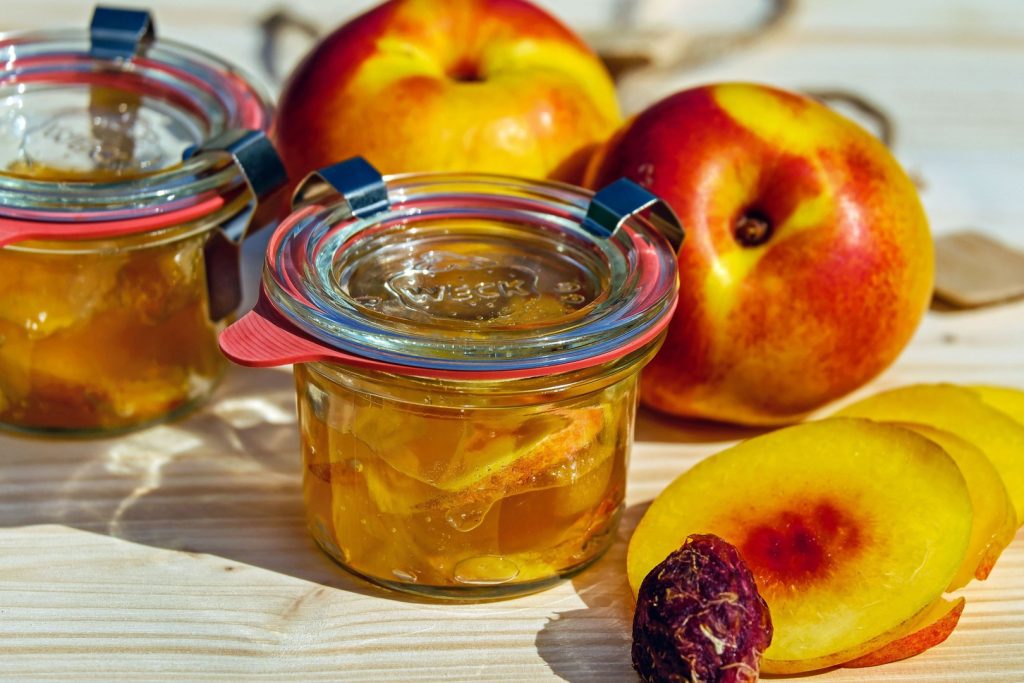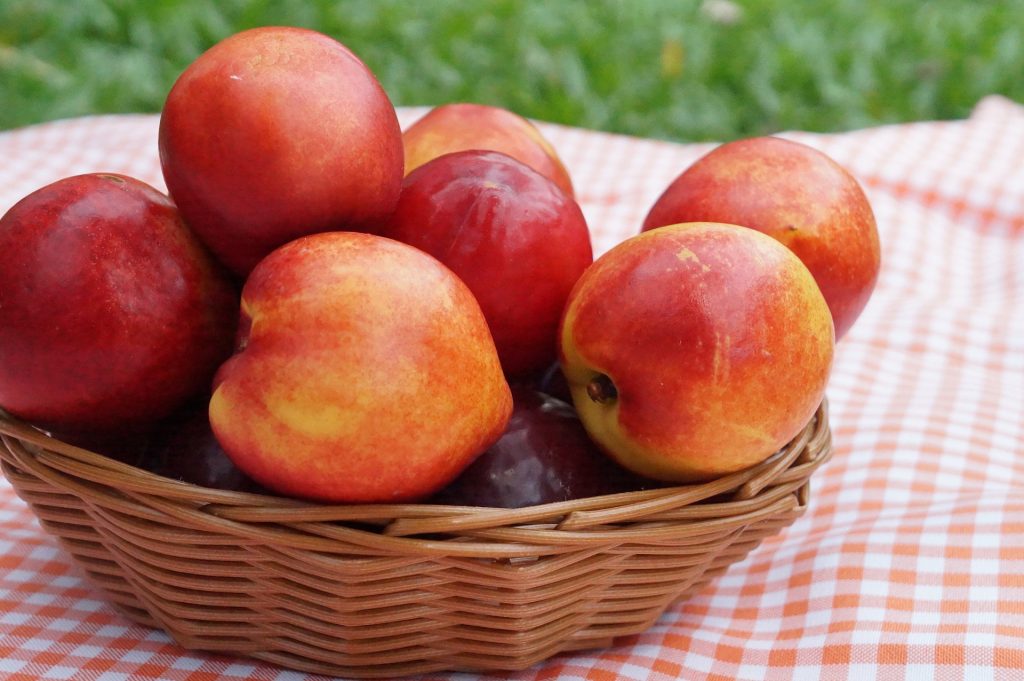Blog
Find articles that matter. From trading to shipping, trends to valuable goods, you can deep dive into everything you need.
Latest Posts
Blog
The textile industry is a broad industry that encompasses the production and sale of fabrics that people use for clothing, home textiles, and industrial purposes. This industry is a multi-billion dollar industry worldwide and has an important place in history. The first weaving machines were invented in England in the late 18th century. Industrial production methods enabled the textile industry to grow rapidly. Today, the textile industry is constantly evolving, increasing its future growth potential by focusing on issues such as sustainability, digitalization, innovative materials, and supply chain management.
Türkiye is an important textile producer and exporter worldwide. The textile sector has an important place in the country's economy and many companies in Türkiye operate in domestic and international markets. Among the products produced by Türkiye in the textile sector, there are various products. They include clothing, home textiles, carpets, rugs, and bags. In addition to natural fibers such as cotton, wool, and silk, artificial fibers are also widely used. Türkiye's textile industry is in an important position throughout the world due to its high quality and competitive prices.
The Turkish textile industry is highly developed and has a respected position in the world. The leading cities among Türkiye's textile centers are Istanbul, Bursa, Denizli, Gaziantep, and Kahramanmaraş. These cities have achieved significant success in textile production and export for years.
Textile Leaders of Türkiye
The contribution of each city is of great importance for Turkey to become a world-renowned manufacturer and exporter in the textile industry.
İstanbul
As Türkiye's largest and most important city, Istanbul is not only a leader in the textile industry but also plays an important role in the country's textile exports. Textile factories in Istanbul produce high-quality fabrics, ready-made clothing, and home textile products, and most of them are for export.
The importance of Istanbul in textile exports has been increasing in recent years. Textile products are exported to many regions of the world, especially to European and Middle Eastern countries. There are many textile companies operating in Istanbul producing high-quality products and offering competitive prices. Hence, the export figures are increasing every year. In addition, the innovative approaches of textile manufacturers in Istanbul and their ability to adapt to fashion trends increase their export potential. For this reason, Istanbul's textile sector has an important position both within the country and around the world.
Bursa
Bursa is an important textile center located in the northwest of Türkiye. It is known especially for its cotton fabric, towel, and woven products production. The city offers high-quality and environmentally friendly products to its customers around the world. The textile industry in Bursa produces using modern technologies and draws attention with its creative designs.
Textile factories in Bursa gain the appreciation of their customers by giving importance to the quality of materials and mastery of workmanship. The city aims to offer innovative products to its customers by closely following the fashion trends around the world. Bursa's success in the textile sector stands out with its creative designs as well as its production capacity. It also has become a preferred center throughout the world.
Denizli
Denizli is a city located in the southwest of Turkey and is an important place in the textile sector. The city produces high-quality towels, bathrobes, bed linens, and duvet covers using modern technologies. These products are exported to customers around the world. Denizli's textile products are known for their excellent quality and durability.
The textile factories in Denizli are developing products that meet the needs of their customers for export. As a result, products such as towels and bathrobes are popular in the markets of Europe, America, and the Middle East. Bed linens and duvet covers are more popular in the European market. Additionally, the factories take care of packaging and logistics to provide the best service to their customers. Denizli's success in the textile sector continues by developing products for export markets, meeting the needs of its customers, and providing the best service possible.
Gaziantep
Gaziantep is a city located in the southeast of Turkey and is one of the country's largest centers for carpet production. The textile factories in Gaziantep specialize in producing high-quality carpets and kilims, which are exported to customers worldwide. Gaziantep's carpets and kilims are known for their intricate designs, vibrant colors, and durability.
In addition to its carpet industry, Gaziantep is also an important center for ready-to-wear clothing and particularly for the lingerie sector. The textile factories in Gaziantep are focused on developing products that meet the needs of their export customers. The factories use modern technologies and high-quality materials to produce lingerie that is both comfortable and fashionable. The lingerie products from Gaziantep are popular in the markets of Europe, America, and the Middle East. The success of Gaziantep's textile industry is due to its focus on meeting the needs of its export customers. It is also due to producing high-quality products that meet international standards.
Kahramanmaraş
Kahramanmaraş, a city located in the southeast of Turkey, is a leading center for yarn production, particularly in high-quality yarns. The yarn factories operating in Kahramanmaraş produce a wide range of high-quality yarns that meet the demands of both domestic and international markets. The city's strategic location and skilled workforce make it an ideal hub for the textile industry.
In addition to yarn production, Kahramanmaraş has a thriving ready-to-wear clothing sector, which includes the production of knitted fabrics. The city's knitted fabric factories are known for their high-quality and diverse range of products, including t-shirts, socks, and sportswear. These products are not only popular in the domestic market but also in the international market, where they are exported to various countries worldwide. The city's success in the textile industry is driven by its commitment to producing high-quality products and its ability to adapt to the changing demands of the global market.
Turkey's Position in Textile Exports
Turkey's textile industry stands out as one of the country's most important export items. The data show that the industry exports to 197 countries and regions in 2022. It has a share of 4.1% in the country's total exports. In this way, it can be said that the sector made a significant contribution to economic growth and strengthened Turkey's position in the world textile market.
Moreover, in January-December 2022, 4 billion 322 million dollars of the sector's exports of 10.4 billion dollars were realized from Istanbul. 1.7 billion dollars were realized from Gaziantep and 1.3 billion dollars from Bursa.
According to the data provided, it is clear that Istanbul, Gaziantep, and Bursa are the leading provinces in Turkey's textile exports. They contribute significantly to the country's total export figures. The success of the sector in reaching more than 170 countries worldwide in one month reveals its importance and potential for growth in the future.
Spring is a season of renewal, growth, and rejuvenation. As the snow melts away, and the weather warms up, it's time to welcome a new season of fresh, flavorful, and nutritious vegetables. Türkiye is known for its diverse and rich agricultural heritage, with a wide range of fresh produce that is perfect for importing during the spring season. Türkiye's fertile soil, favorable climate, and centuries-old farming traditions result in an array of high-quality vegetables that are bursting with flavor and nutrients. In this blog post, we will explore the top spring vegetables to import from Türkiye.
Artichokes
Artichokes are a highly sought-after spring vegetable that is widely cultivated in the fertile lands of Türkiye. They are perennial plants that belong to the thistle family, and their edible flower buds. Artichokes are known for their tender, meaty leaves and delicate, nutty flavor that sets them apart from other vegetables.
In Türkiye, artichokes are grown primarily in the Aegean and Mediterranean regions, where the warm climate and fertile soil provide ideal growing conditions. Also, artichokes are widely cultivated in provinces such as İzmir, Aydın, Muğla, Antalya, Mersin, and Hatay. Turkish artichokes are known for their exceptional flavor and texture, and they are highly valued in the international market. In 2020, Türkiye solidified its position as one of the leading global producers of artichokes, with a total production of 40 thousand tons. Recent data released by the Turkish Statistical Institute revealed that 35% of the country's entire artichoke output was cultivated in the Aegean city of İzmir. This highlights the significant contribution of İzmir to Türkiye's thriving artichoke industry.
Red Pepper
Red peppers, also known as bell peppers, are a colorful and versatile spring vegetable that is widely grown in Türkiye. These sweet and crunchy vegetables come in a variety of colors, including red, green, yellow, and orange, and are used in a wide range of culinary dishes.
Red pepper is generally grown in Southeastern Anatolia, Mediterranean, Aegean and Central Anatolia regions of Türkiye. The hot and dry climatic conditions of these regions create suitable conditions for the production of red pepper. Especially Şanlıurfa, Gaziantep, Kahramanmaraş, Hatay, Adana, Mersin, Antalya, Antalya, Muğla, İzmir, and Afyonkarahisar are important centers for the production of paprika in Türkiye.
Asparagus
Türkiye is known for its rich agricultural heritage, and asparagus is one of the many spring vegetables that are grown here. This vegetable is mainly grown in the Aegean and Mediterranean regions of Türkiye. Also, some of the major production areas for asparagus in Türkiye include Aydın, Denizli, Manisa, Antalya, Mersin, and Adana. Türkiye's annual asparagus production is around 400 tons. In addition, Turkiye exports between 3 to 30 tons of asparagus annually, mainly to the Netherlands and Romania. These regions provide suitable growing conditions for asparagus, including the right climate and soil quality. Asparagus cultivation in Türkiye typically begins in February and lasts until May, and the harvested asparagus is then sold both domestically and internationally.
Okra
Another beloved spring vegetable in Türkiye is okra, which is also commonly referred to as lady's finger. Okra is grown throughout Türkiye, but it is mainly cultivated in the southeastern and eastern regions of the country, such as Şanlıurfa, Mardin, Diyarbakır, Gaziantep, and Adana. These regions have a warm and dry climate that is suitable for the growth of okra. Okra cultivation in Türkiye typically begins in May and continues until October. The harvested okra is then sold both locally and internationally. In addition, a total of 32,423 tons of okra were produced in Türkiye during the 2021/22 season. Additionally, 152 tons of okra were exported during the same season. These figures highlight the significant contribution of Türkiye to the global production and export of this popular vegetable.
Carrots
Carrots are a common vegetable that is available throughout the year in Türkiye. However, they are at their best during the spring season. Carrots are grown in various regions throughout Türkiye but the majority of production takes place in Central Anatolia, Marmara, Aegean, and Mediterranean regions.
Some of the major carrot production areas in Türkiye include Konya, Çumra, Niğde, Bursa, Çanakkale, and Antalya. These regions provide suitable growing conditions for carrots, including the right climate and soil quality. Carrots are typically planted in the fall and harvested in the spring in Türkiye. According to data from the Turkish Statistical Institute, a total of 590,483 tons of carrots were produced in Türkiye during the 2021/22 season. In addition, 112,987 tons of carrots were exported to various countries during the same season
Purslane
Purslane is a plant that is native to Türkiye and is widely grown throughout the country. It is a common plant that can be found in gardens, fields, and along roadsides. Purslane thrives in warm and dry climates and is typically grown in the Mediterranean and Aegean regions of Türkiye, where the climate is suitable for its growth. Some of the major purslane production areas in Türkiye include Antalya, Mersin, İzmir, and Muğla. Also, in the 2021/22 season, Türkiye produced a significant amount of purslane, totaling 12,232 tons, and also exported four tons to different countries.
Celery
Celery is a popular vegetable that is widely consumed around the world. It is known for its crunchy texture and unique flavor, which makes it a versatile ingredient in many different types of dishes. In Türkiye, celery is an important crop, with the country producing a significant amount of celery each year.
Türkiye's climate and soil conditions make it an ideal location for celery cultivation. The majority of celery production takes place in the Marmara and Aegean regions, where the weather is suitable for its growth. According to data from the Turkish Statistical Institute, Türkiye produced approximately 23,159 tons of celery in the 2021/22 season.
Import High-Quality Vegetables from Turkey with Turkish Goods
As a top agricultural country, Türkiye produces high-quality vegetables that are popular all around the world. If you're looking to import fresh and delicious vegetables from Turkey, you can do so with the assurance of Turkish Goods.
At Turkish Goods, we take pride in sourcing the freshest and highest-quality vegetables from Turkey and delivering them to you in the shortest time possible. We're committed to exceptional customer service and offer a price guarantee within 48 hours of your inquiry.
So why wait? Contact us today to get the best price offer within 48 hours and start importing the freshest and healthiest vegetables produced in Turkey. Our expert team is ready to assist you every step of the way, ensuring that your order arrives in a timely and efficient manner.
Cherries are not just delicious and nutritious fruit; they are also valuable export commodities. In recent years, the demand for cherries has been on the rise, with an increasing number of countries becoming major producers and exporters. This article will explore the current state of cherry production and export intensity, highlighting some of the key trends and challenges in this important global industry.
Cherry production has been growing steadily over the past few decades, with many countries around the world expanding their cherry orchards and investing in new technology and techniques to improve yield and quality. Some of the leading cherry producers today include Turkey, the United States, Spain, and Italy, with China and Chile rapidly emerging as major players in the market as well.
The Place of The Countries in the Global Cherry Journey
Cherry is a trendy fruit throughout the world with its unique taste and aroma throughout the summer season. Cherries grown primarily in countries where the Mediterranean climate is intense, attract the attention of both domestic consumers and consumers around the world with their taste. Türkiye also has an important position in terms of cherry production and export and plays an active role in the international trade of cherries together with other cherry-producing countries around the world.
Cherry Production of Countries
Turkey is currently the largest producer of cherries, with over 20% of global production. The country's favorable climate and extensive cherry orchards allow it to produce a wide variety of cherries, including the popular varieties of Samba and Bing.
The United States is the second-largest producer of cherries, with Washington State leading the way. The state produces around 60% of the country's cherry crop, with the majority of it being exported overseas.
Spain and Italy are also significant cherry producers, with Spain focusing on early-season cherries and Italy specializing in sweet cherries. Both countries have a strong domestic market for their cherries, but they also export a significant portion to other countries.
The Rate of Cherry Exports
Cherry exports have been steadily increasing in recent years, with many countries looking to capitalize on the growing demand for fresh cherries in international markets. The top exporting countries include Chile, Turkey, and the United States, with each country exporting several hundred thousand tons of cherries annually.
Chile has become a major player in the cherry export market, with its unique counter-seasonal production allowing it to supply fresh cherries to the Northern Hemisphere during the winter months. The country's exports have increased dramatically in recent years, with China being its largest market.
Overall, the global cherry market is expected to continue its growth trajectory, with increasing demand for fresh cherries and new markets emerging around the world.
Why Has the Demand for Cherries Increased in Recent Years?
One of the key drivers behind the growth of cherry production has been the increasing demand for healthy and natural foods. Cherries are rich in antioxidants, vitamins, and other beneficial nutrients, making them an attractive option for health-conscious consumers. In addition, cherries have a sweet and tangy flavor that appeals to a wide range of tastes, making them versatile ingredients for use in a variety of culinary applications.
While cherry production has been expanding, so too has the market for cherry exports. Many countries are now actively exporting their cherries to other markets, with some of the top destinations including China, South Korea, and the United States. These exports provide valuable revenue for growers and help to support the economies of many cherry-producing regions.
However, there are also challenges facing the cherry industry, particularly in terms of competition and supply chain management. With so many countries now producing and exporting cherries, there is intense competition for market share. Additionally, the perishable nature of cherries makes supply chain management a critical concern, with growers and exporters needing to carefully manage storage, transportation, and handling to ensure that the fruit arrives at its destination in optimal condition.
What Is the Future of Cherry Production and Export?
Despite these challenges, the future of cherry production and export looks bright. With ongoing investments in technology and innovation, as well as a growing global demand for healthy and natural foods, there are many opportunities for growers and exporters to thrive in this exciting and breezy industry.
In conclusion, cherry production and export intensity are key drivers of the global food industry, with many countries around the world now actively growing and exporting this delicious and nutritious fruit. While there are challenges facing the industry, such as competition and supply chain management, there are also many opportunities for growth and success in this exciting and dynamic market.
Moreover, the increasing awareness and concern for sustainable agriculture practices have become a major focus for the cherry industry. Consumers are now more conscious of the environmental impact of food production and are demanding ethically and sustainably sourced products. As a result, many cherry growers and exporters have begun to adopt sustainable farming practices, such as reducing water usage, implementing crop rotation, and using natural pest control methods. This shift towards sustainable practices not only benefits the environment but also helps growers and exporters differentiate their products in a highly competitive market. As the global demand for sustainably sourced cherries continues to grow, the industry is poised to see further expansion and success in the years to come.
Cherry Production and Export in Turkey
When it comes to cherry production and export, Turkey is a major player in the global market. With its favorable climate and experienced growers, Turkey produces some of the finest quality and most delicious cherries in the world. Turkish Goods is one of the leading wholesalers that offer a wide range of cherry varieties sourced directly from Turkish growers, ensuring the highest quality and freshness.
By choosing Turkish Goods as your supplier, you can be confident that you are getting the best cherries that Turkey has to offer. With a commitment to quality and customer satisfaction, Turkish Goods is the perfect partner for businesses looking to source the finest Turkish products.
International trade involves the exchange of goods and services across national borders. Product classification is an essential aspect of international trade as it helps identify and categorize products for the purpose of determining tariffs, taxes, and regulatory requirements. In this blog post, we will explore the different product classification systems, and how product classification works in international trade.
Product Classification Systems
Product classification systems provide a standardized method for identifying and categorizing products based on their nature, composition, and intended use. There are several different classification systems used in international trade, each with their own unique codes and descriptions.
Harmonized System
One of the most widely used product classification systems is the Harmonized System (HS). The HS is a six-digit code system that categorizes products into 21 sections. They are further divided into chapters and sub-headings. Each code in the HS corresponds to a specific product, and the system is used to determine customs duties and taxes as well as for statistical purposes.
The HS is a global product classification system that is used by over 200 countries and territories. It was developed by the World Customs Organization (WCO) in the 1980s. It has been updated periodically to reflect changes in technology, trade, and the global economy.
Standard International Trade Classification
Another product classification system is the Standard International Trade Classification (SITC). The SITC is used primarily for statistical purposes and categorizes products into ten sections based on their economic characteristics and uses. The system was developed by the United Nations in the 1950s and has been updated periodically to reflect changes in the global economy.
North American Industry Classification System
The North American Industry Classification System (NAICS) is another product classification system that is used in Canada, Mexico, and the United States. The NAICS categorizes businesses into sectors and sub-sectors based on their economic activity. The system is used to collect data on businesses for statistical purposes and to analyze economic trends.
Other Product Classification Systems
There are also several other product classification systems that are used in specific regions or industries. For example, the European Union uses the Combined Nomenclature (CN) system to classify products. The pharmaceutical industry uses the Anatomical Therapeutic Chemical (ATC) Classification system.
How Product Classification Works
Product classification is a crucial component of international trade. It is a systematic process used to identify and categorize products based on their nature, composition, and intended use. This process is necessary to determine customs duties and taxes, as well as for statistical purposes.
Classification Process and Criteria
Product classification is based on several criteria, including the nature of the product, its composition, and intended use. For example, a customs official may classify a product as a textile based on its physical characteristics, such as its fibers or weave pattern. The official may also consider the product's intended use, such as whether it is intended for clothing or industrial use.
Customs officials are responsible for classifying products when they enter a country. They use a product's description, invoice, and other accompanying documents to determine its classification. The classification process involves several steps, including analyzing the product's physical characteristics, its intended use, and any applicable regulations or laws.
To classify a product, customs officials typically use a product classification system, such as the Harmonized System (HS), the Standard International Trade Classification (SITC), or the North American Industry Classification System (NAICS). These systems provide a standardized set of codes and descriptions that can be used to identify and classify products.
Importance of Accurate Classification
Accurate product classification is essential for businesses involved in international trade. Incorrect classification can result in the imposition of excessive customs duties and taxes or even fines and penalties. Accurate classification can also expedite the customs process, allowing for faster processing times and fewer delays.
In recent years, advancements in technology have led to the development of automated product classification systems, such as those based on artificial intelligence (AI) and machine learning. These systems can analyze product descriptions and other data to determine the most accurate classification code. However, while technology can aid in the classification process, it is important to note that it is not a substitute for human expertise.
Best Practices for Product Classification
Accurate product classification is crucial for businesses involved in international trade. There are several best practices that can help ensure that products are classified correctly.
Understanding the classification system(s) applicable to products
Businesses should familiarize themselves with the product classification systems that apply to their products. These include the Harmonized System, Standard International Trade Classification, and any other relevant systems. This requires understanding the different codes and descriptions used in each system, as well as any exemptions or special rules that may apply.
Keeping up-to-date with changes in classification rules and regulations
Product classification rules and regulations can change over time. So it is important to stay informed about any updates or changes that may affect your products. This includes monitoring changes to the Harmonized System or other classification systems, as well as any changes to customs rules or regulations in the countries where you do business.
Investing in expertise and training
Product classification can be a complex and technical process, so businesses should invest in expertise and training to ensure that their staff has the knowledge and skills needed to classify products accurately. This may include training on the relevant classification systems, as well as ongoing professional development to stay up-to-date with changes in classification rules and regulations.
Conducting regular product reviews
Businesses should conduct regular reviews of their product classification practices to ensure that products are being classified accurately and in compliance with relevant regulations. This may include reviewing product descriptions, analyzing customs data, and seeking feedback from customers or industry experts.
Using technology to supplement human expertise
While technology can aid in the product classification process, it is important to note that it is not a substitute for human expertise. Businesses should use technology to supplement human expertise, rather than relying on it exclusively. This may include using automated classification systems based on AI or machine learning, but with human oversight and input.
Final Thoughts on Product Classification in International Trade
Product classification is an essential aspect of international trade. Accurate product classification can help businesses comply with regulatory requirements, reduce the risk of penalties and fines, and facilitate faster processing times at customs. As the global trade environment continues to evolve, product classification will remain a crucial tool for businesses and governments alike.
The future of product classification in international trade is likely to be shaped by advancements in technology, such as the use of artificial intelligence and machine learning. These technologies could potentially streamline the classification process and reduce the risk of errors. However, it is important to note that technology is not a substitute for human expertise in product classification.
Digitalization has had a significant impact on the global economy, with many industries undergoing a digital transformation. The field of export has not been left behind, with businesses leveraging digital technologies to enhance their operations and increase efficiency. In this article, we will explore the current state of digitalization in the export industry and the various digital developments that have emerged, along with their significance. Also, we will provide insights into emerging digital technologies and their potential impact on the future of exporting. Let's examine together digital developments in the field of export!
Understanding Digital Developments in Exporting
Digital developments in exporting refer to the use of various digital technologies to streamline and optimize the processes involved in exporting goods and services. These developments have transformed the industry by increasing efficiency, reducing costs, and improving overall competitiveness. Here are some of the types of digital developments in exporting.
E-commerce Platforms
E-commerce platforms have revolutionized the way businesses export their products. They offer a convenient and efficient way for businesses to sell their products globally, allowing them to reach a wider audience and increase sales. By utilizing these online marketplaces, businesses can streamline the export process and reduce costs associated with traditional export methods. Overall, e-commerce platforms have opened up new opportunities for businesses to engage in international trade and expand their global reach.
Electronic Data Interchange (EDI)
A method of electronically exchanging information between businesses, reducing the need for paper-based documentation and enhancing efficiency. EDI allows businesses to exchange data such as purchase orders, invoices, and shipping notices in a standardized format, reducing the risk of errors and improving the speed of transactions. By using EDI, businesses can also improve their visibility into their supply chain operations, enabling them to make better-informed decisions and respond more quickly to changing market conditions.
Overall, these digital developments have had a significant impact on the exporting industry, making it easier for businesses to engage in international trade and reach new markets. By embracing these technologies, businesses can improve their competitiveness in the global marketplace and unlock new opportunities for growth and innovation.
Supply Chain Management
Digital developments have had a transformative impact on supply chain management in the exporting industry. These technologies have made it easier for businesses to track their products, improve transparency, and enhance collaboration with their partners.
One of the main advantages of digital developments in supply chain management is increased visibility. Businesses can use digital technologies to track their products as they move through the supply chain, providing them with real-time information about the location and status of their goods. This allows businesses to respond quickly to any issues that may arise, reducing the risk of delays or disruptions in the supply chain.
Digital developments in supply chain management have also improved collaboration between businesses and their partners. Cloud-based platforms and other digital tools make it easier for businesses to share information securely and collaborate in real time. This has reduced the need for physical paperwork and enhanced the speed and accuracy of information sharing.
Examples of digital developments in supply chain management include Radio Frequency Identification (RFID) technology, which uses radio waves to track products throughout the supply chain, and blockchain technology, which provides a secure and transparent way to track and manage transactions.
Digital developments in supply chain management have improved the efficiency and transparency of the exporting industry, making it easier for businesses to engage in international trade and reach new markets. By embracing these technologies, businesses can improve their competitiveness and increase their chances of success in the global marketplace.
Digital Developments in Logistics and Transportation
Digital developments in logistics and transportation refer to the integration of digital technologies into the processes involved in moving goods from one place to another. These technologies have transformed the industry, providing businesses with greater visibility, control, and efficiency in their logistics operations. Examples of digital developments in logistics and transportation include:
Transportation Management Systems (TMS)
Digital platforms provide businesses with end-to-end visibility and control over their transportation operations, allowing them to optimize routes, reduce transportation costs, and improve delivery times.
Autonomous Vehicles
Self-driving vehicles can transport goods without the need for human intervention, reducing the risk of accidents and increasing efficiency.
Warehouse Automation
Robotics and automation technologies can automate warehouse processes such as picking and packing, reducing errors and increasing speed.
Emerging Technologies and Their Potential Impact on Digital Exports
The rise of digital technologies has significantly transformed the global export industry. As more businesses turn to digital platforms for selling their products worldwide, emerging technologies like blockchain, virtual and augmented reality, 5G, and IoT are increasingly being utilized to streamline and enhance the export process.
Blockchain Technology
Blockchain technology has the potential to revolutionize the way export transactions are conducted. It provides a secure and transparent way to store and transfer data, making it ideal for cross-border transactions. Use cases for blockchain in digital exports include supply chain management, international payments, and digital identity verification.
Cryptocurrencies are also impacting digital exports by providing a decentralized and borderless payment system. They can be used to facilitate cross-border transactions without the need for intermediaries like banks or payment processors. However, regulatory challenges exist around the use of cryptocurrencies, as different countries have varying regulations on their use and exchange.
Emerging Technology
Emerging technologies such as virtual and augmented reality, 5G, and the Internet of Things (IoT) have the potential to transform the way digital exports are conducted. VR and AR can enhance the customer experience by allowing them to visualize and interact with products before making a purchase. 5G can enable faster and more reliable connectivity, while IoT can improve supply chain management and logistics.
Unlocking the Potential of Digital Exports
Digital developments have significantly transformed the exporting industry. Technology has enabled businesses to operate more efficiently and cost-effectively and reach a wider audience through e-commerce platforms, virtual meetings, and other digital tools. Businesses that embrace digitalization in their exporting strategy are likely to benefit from increased efficiency, reduced costs, and expanded global reach. In the digital age, businesses must adopt these new technologies and keep up with the rapidly changing global market.
The future of exporting in the digital age looks promising, as technology continues to evolve, and businesses can leverage these advancements to explore new markets and grow their international presence. However, it is essential to stay ahead of the curve and embrace digitalization as early as possible. In summary, digitalization has opened up new opportunities for businesses to expand their exporting capabilities. The future of exporting belongs to those who embrace digitalization and leverage technology to their advantage.
Turkish coffee is a cherished and time-honored beverage that has been a staple in Turkish culture for centuries. With its unique brewing method and bold taste, Turkish coffee has become increasingly popular around the world. Being in such high demand in the world, Turkish coffee exports remain an important part of the Turkish economy.
In this blog post, we will delve into the intricacies of Turkish coffee production, from the type of coffee beans used to the roasting and brewing process. Additionally, we will explore the key factors that contribute to the quality of Turkish coffee and the growing interest as well as the export of Turkish coffee. Read on to learn more.
The History of Turkish Coffee
The history of Turkish coffee is rich and storied, with origins dating back centuries. According to the sources on the subject, the first Turkish coffee was brought to the Ottoman Empire by traveling merchants in the 15th century. It is believed that Özdemir Pasha, the governor in charge of Yemen, introduced Turkish coffee to Ottoman Sultan Suleiman the Magnificent. Turkish coffee quickly became a beloved beverage in the Ottoman Empire, and its popularity only continued to grow over time.
Turkish coffee has also played an important role in Turkish culture throughout history. In the Ottoman Empire, coffeehouses were important social gathering places, where people would gather to drink coffee, play games, and discuss politics and current events. To this day, this tradition still continues in Türkiye where people gather in coffeehouses. As for Turkish coffee, it remains a popular beverage in Türkiye. While it is consumed almost on a daily basis, it is also served during special occasions and holidays.
Türkiye’s Increasing Coffee Exports
Even though Türkiye is not a country with a suitable climate for cultivating coffee, the Turkish coffee export market is a significant part of the Turkish economy. As the export of coffee is increasing with each passing year, Türkiye is displaying a successful performance.
In the 2017-2021 period, Türkiye exported coffee to 144 countries in total and generated a revenue of 80 million dollars. During this period Saudi Arabia, Cyprus, and the Netherlands were the top three countries that imported coffee from Türkiye.
In the list, Saudi Arabia came first with an import worth 11,6 million dollars. Cyprus followed second with a coffee import worth 8,1 million dollars. Lastly, the Netherlands came third with 7,4 million dollars worth of coffee imports.
According to the Turkish Statistical Institute, Türkiye exported 23,7 million dollars worth of coffee alone in 2021, increasing its coffee exports significantly.
Why is Turkish Coffee in Demand?
One of the factors contributing to the popularity of Turkish coffee exports is its unique flavor profile. Turkish coffee is known for its rich, bold flavor, which comes from the combination of finely ground coffee beans, sugar, and water. This flavor profile sets Turkish coffee apart from other types of coffee and makes it a favorite among coffee lovers around the world.
Another factor contributing to the success of Turkish coffee exports is the growing demand for specialty coffee. Specialty coffee is a term used to describe high-quality coffee that is sourced, roasted, and brewed with care. Turkish coffee is considered a specialty coffee due to its unique brewing method and flavor profile. As more consumers around the world seek out specialty coffee, Turkish coffee has the potential to become even more popular.
What Makes Turkish Coffee Special?
Turkish coffee is famous for its distinct flavor and brewing method. What sets Turkish coffee apart from other coffee varieties is its flavor profile, which is complex and multi-layered.
Brewing Method
The brewing process of Turkish coffee is an essential factor that contributes to its unique taste. Unlike other coffee varieties that use drip or espresso machines, Turkish coffee is brewed using a cezve, a small copper or brass pot with a long handle. The cezve allows for precise temperature control and brewing technique that is critical to the coffee's flavor.
Water Quality
The quality of the water used to brew Turkish coffee also plays a crucial role in its taste. Turkish coffee requires soft water, which is water with low mineral content. Hard water, which contains high levels of minerals such as calcium and magnesium, can affect the coffee's taste and aroma.
Grinding
The grinding process of Turkish coffee is another factor that contributes to its unique flavor. Turkish coffee beans are ground into an extremely fine powder, which is finer than espresso or drip coffee. This fine grind allows for maximum extraction of flavor from the beans during the brewing process.
Foaming
One of the most distinctive features of Turkish coffee is the foam that forms on top during the brewing process. This foam is created by the coffee oils and contributes to the coffee's rich, creamy texture.
Sugar
Turkish coffee is often brewed with sugar, which adds to the coffee's flavor complexity. Sugar is added to the cezve before the brewing process begins, and the amount used can vary depending on personal preference.
The unique brewing method, water quality, grinding process, foaming, and addition of sugar all play critical roles in creating the complex and flavorful taste of Turkish coffee.
Experience the Richness of Türkiye's Turkish Coffee Exports with Turkish Goods
Turkish coffee is a unique and delicious beverage with a rich history and a loyal following around the world. Moreover, Turkish coffee exports continue to be an important part of the Turkish economy each year, and with the growing demand for specialty coffee, its popularity is only set to increase.
Turkish Goods offers a wide range of products, including high-quality Turkish coffee that can be imported to any location in the world. We pride ourselves on sourcing only the finest products and delivering them directly to your doorstep. So, if you want your customers to experience the rich flavor and aroma of authentic Turkish coffee, we invite you to visit our website and explore our offerings.

